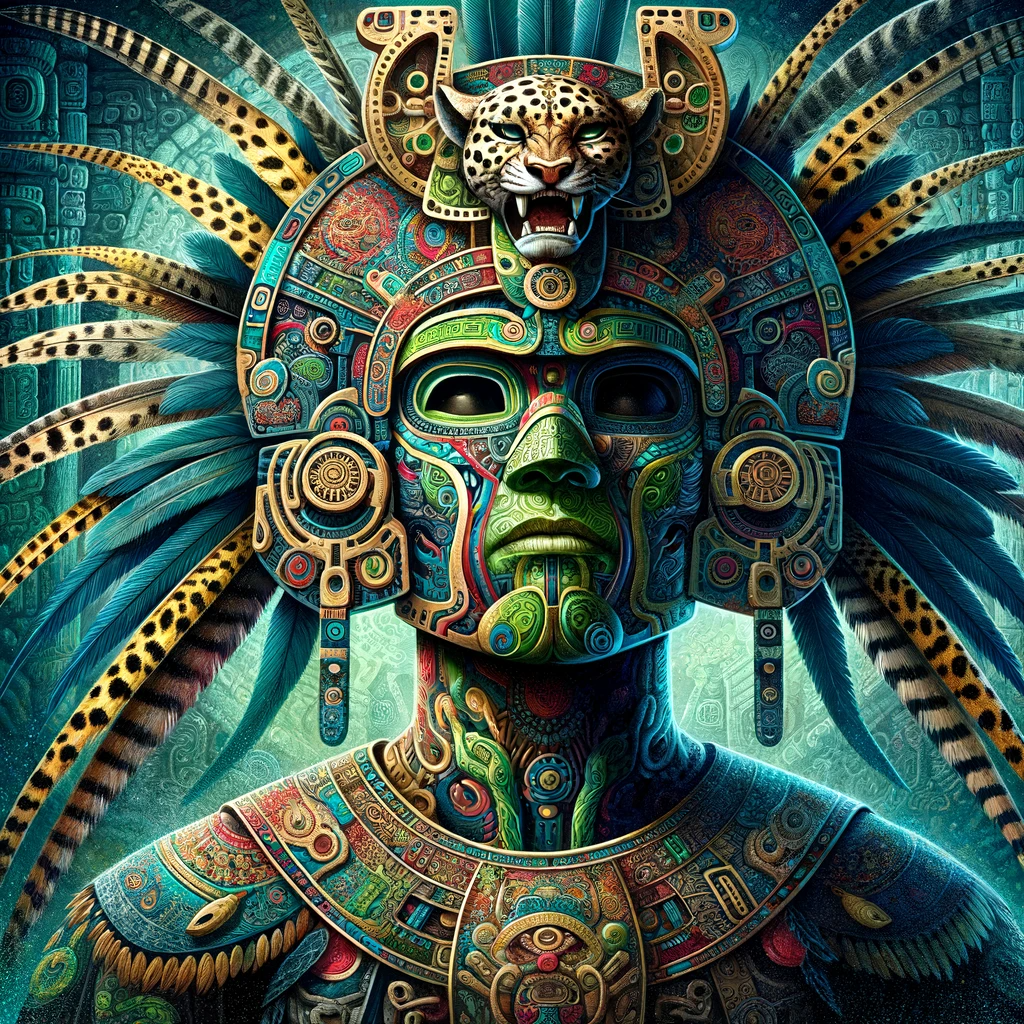
In the pantheon of Aztec mythology, few deities capture the imagination quite like Tezcatlipoca. Known as the "Smoking Mirror," this god's domain encompassed a vast array of aspects, from the cosmos and earth to war and rulership. Understanding Tezcatlipoca is to delve into the complex heart of Aztec religion and worldview.
Origins and Name
The name Tezcatlipoca, translating to “Smoking Mirror” in Nahuatl, the language of the Aztecs, embodies his enigmatic and multifaceted nature. The "smoke" aspect of his name suggests something intangible, mysterious, or even deceptive. Mirrors in Aztec culture were not only tools for seeing reflections but also symbolic portals for divination and revelation of the future.
Attributes and Iconography
Tezcatlipoca is often depicted as a young, vigorous god with a distinctive black stripe across his face and a missing foot, replaced by a smoking mirror. This mirror served as a metaphor for the power to see everything, including the thoughts and plans of humans. In art, he is sometimes shown with jaguar motifs, embodying the ferocity and stealth of this revered animal.
Domains and Influence
His dominion was vast, encompassing the sky and the earth, night, beauty, war, strife, and even rulership. As a god of change and conflict, Tezcatlipoca was believed to incite wars and bring about the rise and fall of empires. His capricious nature made him a deity to be both revered and feared.
Rituals and Worship
Worship of Tezcatlipoca was marked by elaborate ceremonies and rituals. One of the most significant was the Toxcatl festival, a ritualistic sacrifice of a young man who had been treated as an embodiment of Tezcatlipoca for an entire year. This annual ceremony was not only a religious event but also a reinforcement of social and political order.
Tezcatlipoca vs. Quetzalcoatl
In Aztec mythology, Tezcatlipoca often appears in opposition to Quetzalcoatl, the feathered serpent deity. This dichotomy symbolizes the balance of opposing forces – light and dark, creation and destruction. Their legendary battles and reconciliations represented the dynamic equilibrium essential to the Aztec understanding of the world.
Legacy and Modern Interpretation
The legacy of Tezcatlipoca in modern times is as complex as the deity himself. He is a figure of intrigue and study in the field of Mesoamerican studies. For contemporary descendants of the Aztecs, he remains a potent symbol of the rich cultural heritage and the mysterious worldview of their ancestors.
Conclusion
Tezcatlipoca's enigmatic persona continues to fascinate scholars and enthusiasts alike. His significance in Aztec culture serves as a reminder of the rich tapestry of beliefs and traditions that defined one of history's most intriguing civilizations. As we uncover more about this mysterious deity, we gain deeper insights into the Aztec world, a civilization that continues to captivate and inspire centuries after its decline.
Origins and Name
The name Tezcatlipoca, translating to “Smoking Mirror” in Nahuatl, the language of the Aztecs, embodies his enigmatic and multifaceted nature. The "smoke" aspect of his name suggests something intangible, mysterious, or even deceptive. Mirrors in Aztec culture were not only tools for seeing reflections but also symbolic portals for divination and revelation of the future.
Attributes and Iconography
Tezcatlipoca is often depicted as a young, vigorous god with a distinctive black stripe across his face and a missing foot, replaced by a smoking mirror. This mirror served as a metaphor for the power to see everything, including the thoughts and plans of humans. In art, he is sometimes shown with jaguar motifs, embodying the ferocity and stealth of this revered animal.
Domains and Influence
His dominion was vast, encompassing the sky and the earth, night, beauty, war, strife, and even rulership. As a god of change and conflict, Tezcatlipoca was believed to incite wars and bring about the rise and fall of empires. His capricious nature made him a deity to be both revered and feared.
Rituals and Worship
Worship of Tezcatlipoca was marked by elaborate ceremonies and rituals. One of the most significant was the Toxcatl festival, a ritualistic sacrifice of a young man who had been treated as an embodiment of Tezcatlipoca for an entire year. This annual ceremony was not only a religious event but also a reinforcement of social and political order.
Tezcatlipoca vs. Quetzalcoatl
In Aztec mythology, Tezcatlipoca often appears in opposition to Quetzalcoatl, the feathered serpent deity. This dichotomy symbolizes the balance of opposing forces – light and dark, creation and destruction. Their legendary battles and reconciliations represented the dynamic equilibrium essential to the Aztec understanding of the world.
Legacy and Modern Interpretation
The legacy of Tezcatlipoca in modern times is as complex as the deity himself. He is a figure of intrigue and study in the field of Mesoamerican studies. For contemporary descendants of the Aztecs, he remains a potent symbol of the rich cultural heritage and the mysterious worldview of their ancestors.
Conclusion
Tezcatlipoca's enigmatic persona continues to fascinate scholars and enthusiasts alike. His significance in Aztec culture serves as a reminder of the rich tapestry of beliefs and traditions that defined one of history's most intriguing civilizations. As we uncover more about this mysterious deity, we gain deeper insights into the Aztec world, a civilization that continues to captivate and inspire centuries after its decline.